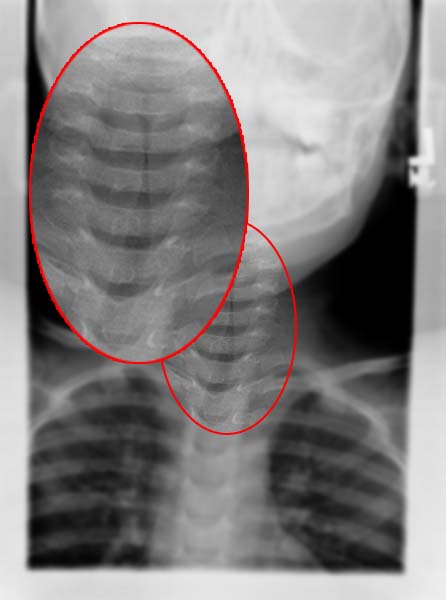Croup chest x ray
|
Croup Microchapters |
|
Diagnosis |
|---|
|
Treatment |
|
Case Studies |
|
Croup chest x ray On the Web |
|
American Roentgen Ray Society Images of Croup chest x ray |
Editor-In-Chief: C. Michael Gibson, M.S., M.D. [1]
Chest X Ray
- Steeple sign is seen on anteroposterior radiographs of the soft tissues of the neck.
- Normal lateral convexities of the subglottic trachea are lost, and narrowing of the subglottic lumen produces an inverted V configuration in this area.
- Point of the inverted V is at the level of the inferior margin of the true vocal cords.
- Narrowing of the subglottic lumen alters the radiographic appearance of the tracheal air column, which resembles a steeply pitched roof or a church steeple.
- The lateral radiograph of the upper airway will show a normal epiglottis and narrowing of the subglottic region.
